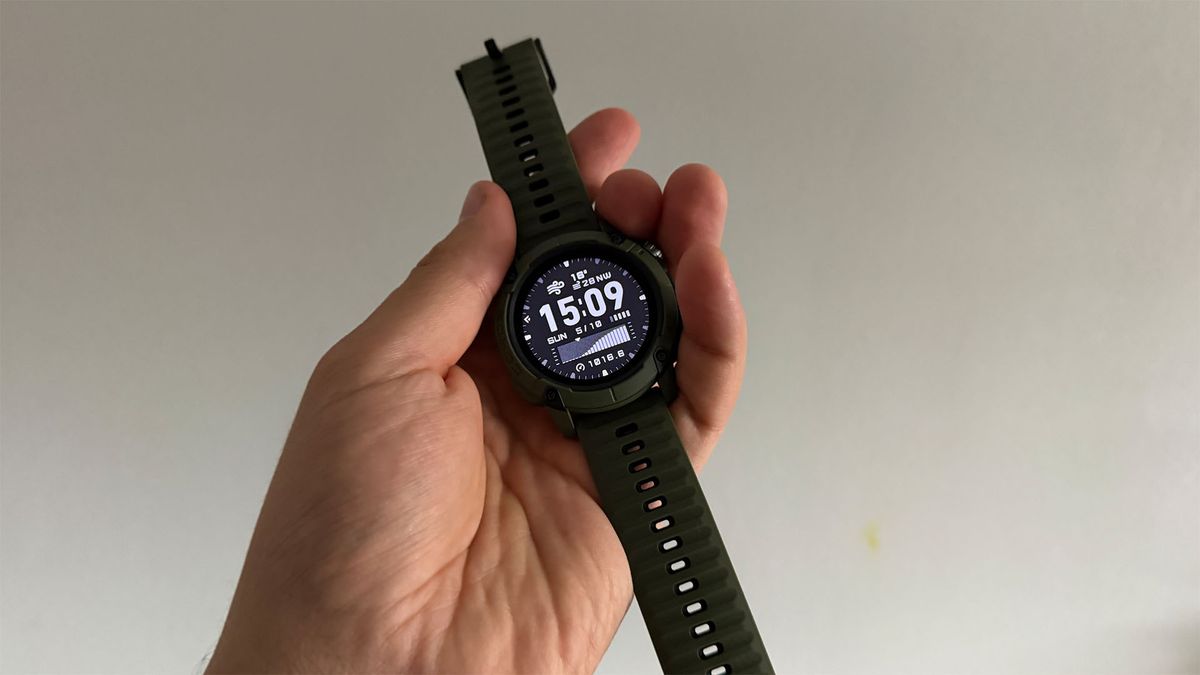This informational guide, part of PS's Condition Center, lays out the realities of this health concern: what it is, what it can look like, and strategies that medical experts say are proven to help. You should always consult your doctor regarding matters pertaining to your health and before starting any course of medical treatment.
Netflix's new dark comedy series "Sirens" offers a new perspective on wealth, power, and trauma. But what you might not know is that one of the featured actors, Lauren Weedman, was dealing with a temporary facial paralysis while filming. The condition is called Bell's palsy, and it's a neurological disorder that causes paralysis or weakness on one side of the face. Although symptoms typically resolve within a few weeks, they can sometimes persist for a full year. "The idea of sitting out and waiting for it to get better just was not an option," Weedman told the Huffington Post in an interview published on May 27.
Weedman has dealt with Bell's palsy before, but in the same article, she said the recent flare-up began during a three-week break from work. "I wanted to talk to [the 'Sirens' team] about it as soon as I could so I wouldn't be stressed the whole time," she said. Then, with the help of "Sirens" showrunner Molly Smith Metzler, the team decided to work Weedman's condition into the script.
"It's such a terrific character trait," Metzler told the Huffington Post, saying it ultimately added to Weedman's burnt-out chef character, Patrice. Indeed, Weedman's Patrice offers a very simple explanation for her facial paralysis in the show: "Every summer, this happens; the stress of this job, my Bell's palsy is back."
While stress can certainly serve as a trigger for Bell's palsy, it's not the only reason someone might have a flare-up (but unfortunately, there's no known cause). Weedman is also not alone in her experience, with an estimated 40,000 cases of Bell's palsy in the US each year. With this in mind, read on to see what the condition actually entails, from some of the most common symptoms, to potential treatment options.
Experts Featured in This Article:
Nicholas Lannen, MD, is a neurologist with Corewell Health.
Amit Kochhar, MD, is board-certified in otolaryngology, head and neck surgery, and facial plastic and reconstructive surgery. He's also the director of the facial nerve disorders program at Pacific Neuroscience Institute in Santa Monica.
Ashley Weng, MD, is a neurologist and assistant professor of neurology at Rutgers Robert Wood Johnson Medical School.
What Is Bell's Palsy?
"Bell's palsy is a condition in which the facial nerve — the nerve that controls the muscles of facial expression — becomes inflamed, injured, or even stops working altogether," says neurologist Nicholas Lannen, MD. "This causes facial droop due to weakness or paralysis of these muscles." While Bell's palsy can affect anyone, it's most common in people between the ages of 15 and 45.
Bell's palsy usually only causes a temporary facial muscle paralysis, Dr. Lannen says, and most people recover within four to six months. "People are usually fairly young when this happens," adds otolaryngologist Amit Kochhar, MD, director of the facial nerve disorders program at Pacific Neuroscience Institute in Santa Monica.
Bell's Palsy Symptoms
People with Bell's palsy may experience a range of symptoms. "It's usually associated with some pain in the ear and increased sensitivity — that proceeds the facial paralysis by a few days," Dr. Kochhar says. "Patients may feel a little tired and feel like they have bad dental pain."
Then comes paralysis or weakness on one side of the face. "You may notice one side of your mouth does not move when you try to smile," says neurologist Ashley Weng, MD. "You may have difficulty closing your eyes or raising your eyebrows. Some patients notice drooling out of one corner of their mouth." But, she adds, "not everyone will have the same symptoms, and the severity of the symptoms may vary." These symptoms usually come on suddenly, Dr. Kochhar says. According to the NINDS, additional symptoms may include:
- Facial pain or abnormal sensations
- Excessive tearing in one eye
- Problems with taste
- Low tolerance for loud noises
- Pain around the jaw and behind the ear
- Trouble eating or drinking
Bell's Palsy Causes
"The majority of cases of Bell's palsy are idiopathic, meaning that we cannot identify a specific cause," Dr. Weng says. That said, the NINDS lists the following as possible triggers for Bell's palsy:
- A dormant viral infection (like shingles or HSV-1)
- Impaired immunity from stress, sleep deprivation, physical trauma, or an autoimmune condition
- A facial nerve infection
- Damage to the myelin sheath (the fatty covering that insulates nerve fibers)
Pregnancy, preeclampsia, hypertension, diabetes, and upper respiratory conditions can also increase the risk of developing Bell's palsy, Dr. Kochhar says.
How Bell's Palsy Is Diagnosed
There's no singular test to diagnose Bell's palsy, but your doctor will want to rule out stroke, infections, Lyme disease, and inflammatory conditions first, per the Mayo Clinic. In order to make a diagnosis, symptoms are typically assessed by a doctor via physical examination. This usually means checking for weakness in the upper and lower facial muscles on one side of the face. This includes the forehead, eyelid, and mouth. Routine laboratory or imaging studies may also be useful to confirm a diagnosis or rule out other diseases.
Bell's Palsy Treatment
There's also no set treatment for Bell's palsy, and most people with the condition make a full recovery in a few weeks (with or without treatment), Dr. Kochhar says. "Treatment varies depending on severity and the duration of the symptoms," Dr. Weng says. "It is important to seek out a medical professional as early as possible, as some treatments are only beneficial during the initial stages of Bell's palsy."
Weedman went through steroid and antiviral therapy before returning to set. She also tried acupuncture and quit drinking in an effort to reduce inflammation. As in her case, your doctor may prescribe medications like corticosteroids to reduce swelling of the facial nerve, Dr. Kochhar says, noting that these may work best if they're started within a few days of your symptoms starting.
"The goal of the steroids is to lessen the inflammation of the facial nerve and to hasten healing and recovery," Dr. Lannen says. "Sometimes — but not always — your doctor might also prescribe an antiviral drug such as acyclovir."
If you have eyelid weakness or drooping, your doctor may also recommend eye drops to keep your eyes moist. "You may be asked to tape your eye closed at night to prevent injury to the cornea," Dr. Lannen says (something Weedman tried as well). If your eye is impacted, it's important to take good care of it. "You could potentially scratch it, injure it, or go blind," Dr. Kochhar says.
The Bottom Line
Fortunately, the vast majority of patients "will make a complete recovery within a few weeks to a month," Dr. Kochhar says. However, some people may have long-standing nerve damage and trouble making a symmetrical smile or symmetrical facial movements. "Bell's palsy is frightening and frustrating, especially when it is early in its course," Dr. Lannen says. "That said, most people have full or near-complete recovery of their facial paralysis."
If you suspect you might have Bell's palsy, it's important to seek care immediately. Not only do you need to rule out serious conditions like stroke, but you can also start treatment to help get you on the path to recovery ASAP.
— Additional reporting by Chandler Plante
Korin Miller is a writer specializing in general wellness, health, and lifestyle trends. Her work has appeared in Women's Health, Self, Health, Forbes, and more.
Chandler Plante (she/her) is an assistant health and fitness editor for PS. She has over four years of professional journalism experience, previously working as an editorial assistant for People magazine and contributing to Ladygunn, Millie, and Bustle Digital Group.

 6 months ago
205
6 months ago
205

:quality(85):upscale()/2025/11/28/816/n/1922507/96dfa0316929eb7d6009c4.58082318_.png)
:quality(85):upscale()/2025/11/28/911/n/1922564/6007a1e4692a0b7e0754d6.70992304_.jpg)





 English (US) ·
English (US) ·